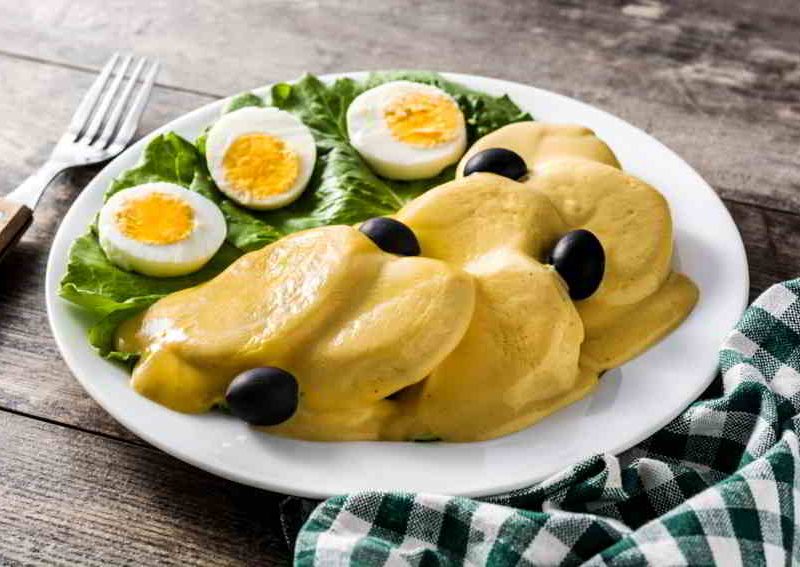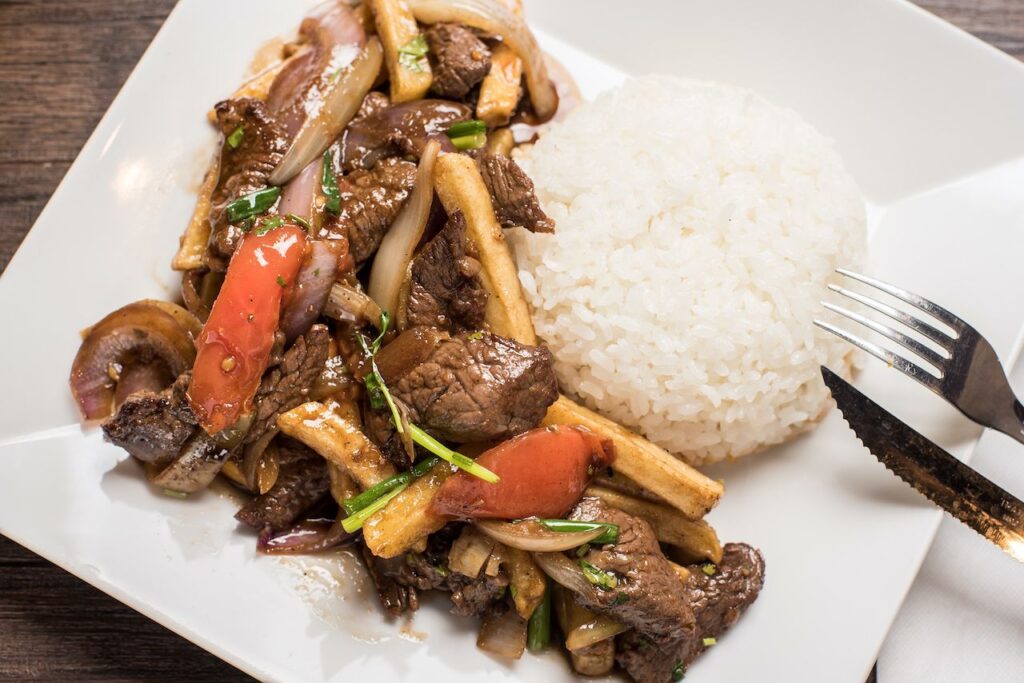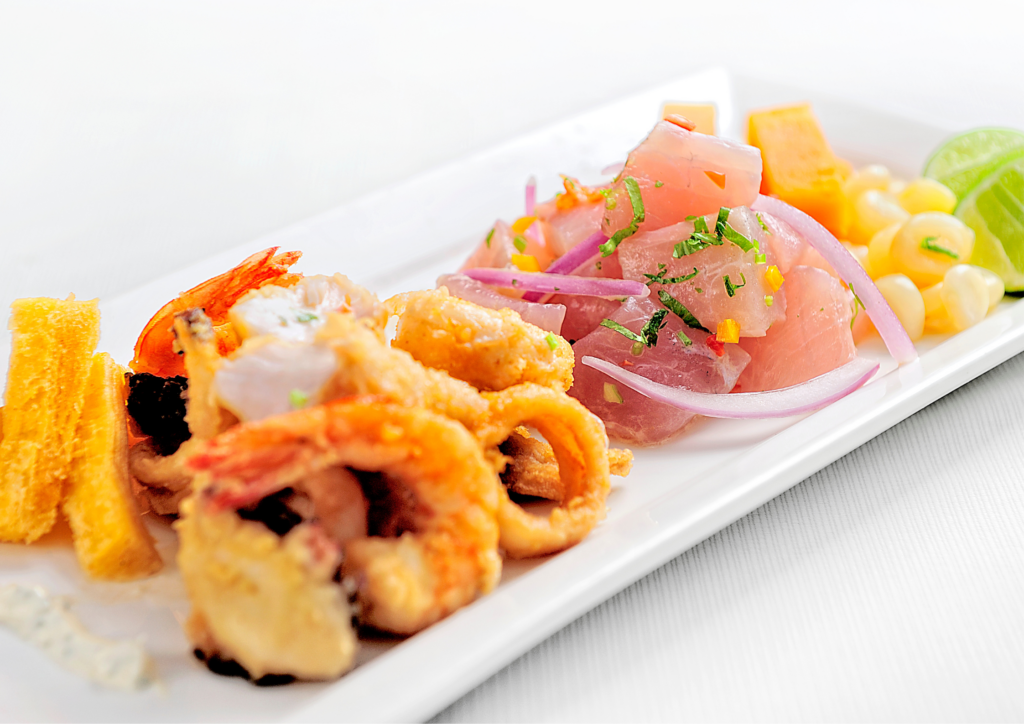Ceviche, tiradito, pisco sour…all names we recognize from menus throughout Norway; but, where do these dishes come from? Peru, of course! Let´s dig into the history and traits of this popular cuisine.
Author: Samantha Gross-Galindo
Peru has long been considered a foodie destination for its unique fusion of Andean, European, Asian, and African cuisines. Some Andean dishes that are still eaten today include: cuy chactado and pachamanca. Now, it may be strange to eat guinea pig, but these are endemic to the region and were thus normal to raise and eat before they became widely known as pets. The conquistadores in the 16th century first introduced European flavors which included the use of onions and spices. However, today Peru has had multiple European ethnicities influence its cuisine. Some examples include ají de gallina and carapulcra from Spain and Italy, respectively. Peruvian pisco, a kind of brandy made from grapes, was also a product of colonization as the conquistadors brought grapes to cultivate for their love of wine.

The African influence came from the conquistadors that brought slaves to work the mines. Common dishes that reflect Peru´s African heritage include anticuchos and picarones. In the mining boom of the 19th century, many Chinese immigrants came and their stir-fry techniques and use of rice influenced the local food culture. This style of cooking even has its own term–”chifa.” Lomo saltado and arroz chaufa are the most common examples of this cooking style.

The Japanese immigrated to Peru in the 20th century and also greatly influenced the cuisine. “Nikkei” which is a term used for Japanese descendents in foreign countries has also become the term used to describe the Japanese-Peruvian food fusion. The Japanese are credited with introducing other forms of seafood other than fish to the Peruvian diet. Some examples of dishes that emphasize this are sea urchin rice or grilled octopus. Tiradito is said to have been invented by a nikkei chef.

Ceviche is Peru´s national dish; but, every region has its own dishes that its known for. Examples of this style include tacacho con cecina and juane from the Amazonian side. This region is also rich in unique fruits and vegetables. Examples include the camu-camu, a small berry rich in antioxidants, the aguaje, used in many juices, and the ungurahui, a palm tree packed with proteins and essential nutrients. Along the coast, there are the popular choritos a la chalaca, various kinds of ceviches, tiraditos, and causas with different types of seafood. In the southeastern coast of Peru, there are also other dishes called ocopa arequipeña which is another version of the papa a la huancaina, the chupe de camarones, which is a kind of shrimp soup, and the rocoto relleno, which is a stuffed chili pepper dish. The rocoto pepper is one of the spiciest in the world!
Peru and the Americas gave Europe many crops but some that are particular to the Andean region include quinoa and potatoes. Quinoa is now considered a superfood because of its vitamin, protein, and fiber content. In Peru, it can be used in stews, soups, or salads. Quinoa ceviche is a common side that gives a bite of freshness. Did you know that of the 5,000 varieties of potato found around the world, 80% of them are cultivated in Peru? The most common potato dish is papa a la huancaina.
Corn, yuca, and many varieties of peppers are also other major crops although varieties came from multiple countries within Latin America. Regardless of their origin, corn, yuca, and chili peppers are a staple in Peruvian cuisine. Toasted corn, or maiz chullpi, a common snack and yuca can be found as either a common side or as a dessert. It is quite unjust that Mexico gets the main reputation in Latin culture as being a country with spicy food as Peru also contains many spicy chili peppers in its national dishes. Peruvians have over 50 varieties of chili peppers that can give mild, medium, or spicy flavors.
Are you hungry yet? Below you will find a list of Peruvian restaurants in Oslo. Perhaps you would like to celebrate with them for Peru´s Independence Day on July 28th? Either way, ¡buen provecho!
LAF has no association with these restaurants. This is merely a list for the readers to decide whether to visit them or not. Some restaurants where you can try Peruvian food around Oslo include:
